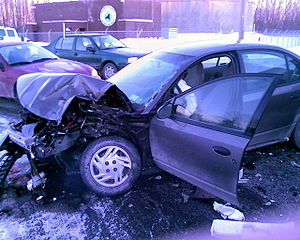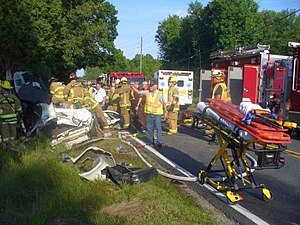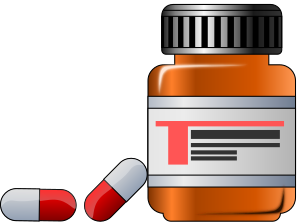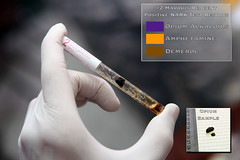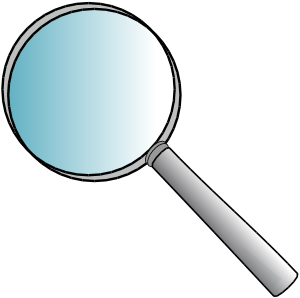| . (Photo credit: Wikipedia) |
My daughter is a type 1 diabetic, and my mind went instantly to the idea that the other driver wasn't perceiving properly; they were having a medical emergency. This happens for diabetics when their cognition and eyesight is suddenly impaired, and they cannot think their way out of the situation.
This could be a plotting device where a very innocent person could be having a very bad medical day and do some very heinous things that would not only twist a plot but leave the heroine psychologically damaged. A new medication, a recent stomach bug that dropped her blood sugar levels, so many ways to get a driver into trouble - maybe all of those sleepless nights that you've written into her plot line are coming back to haunt your heroine. Exhaustion has a similar effect on driving ability as alcohol.
The good news is that traffic fatalities are statistically down because of:
* Redesigned cars* Seat belt and child seat use
* Decrease in driving under the influence
* Legislation such as increased driving ages and incremental drivers licenses
Common Causes of traffic accidents include:
| . (Photo credit: Wikipedia) |
* Failure to yield
* Excessive speed
* Following too close
* Disregarding traffic signals
* Driving styles
- texting
- talking on the phone
- eating
- doing makeup
Equipment failure is NOT a significant cause of car accidents. So if you want to call attention to a murder or attempted murder cut the brake lines or otherwise manipulate the equipment because this would be a heads up to forensic investigators that something is off.
Kinds of accidents that cause fatalities include:
* almost half are collisions between moving vehicles* another 25% fixed objects such as walls or trees
* 10% pedestrians
* 10% non-collisions like going over cliffs
* 2% bikes
* 1% trains
ON THE SCENE
| (Photo credit: Wikipedia) |
a. Are there people with guns shooting? EMT cannot go
in until the scene of the accident is secured.
b. Are there any chemical hazards? Perhaps from a
delivery truck? If so, a hazard team (hazmat) must be
called in.
c. Several teams usually work together (the fire, police,
and EMTs) to save the occupants.
BLOG LINK - EMT
2. A road block is established to maintain the integrity
of the scene. Then an investigator will become
involved to help determine what exactly happened to
cause the accident.
Investigators should:
* Make sure they are visible and not creating further victims by getting themselves in trouble.
Accidents have reasons and rules
* They leave a trail of forensic evidence.* 90% includes human error
* 50% include a problem like highway design
Video Quick Study (9:41) Shows an accident investigator talking about how they use crash forensics.
Investigators will use:
* Length of skid marks* Crush depth
* Positions where vehicles come to rest after the accident
* Direction the vehicle had been traveling
* Point of impact (if it can be determined)
* Were the lights and turn signals used properly (they check the filaments in the light bulbs for this
information)
* Some cars are equipped with black boxes which stores car use information.
Video Study (22:15) For your inner geek: Understanding car crashes Basic Physics
Video Study (23:51) More inner geek: Physics Meets Biology
As a writer you'll want to decide:
* Speed of heroine's car.
* Car that your heroine is driving (model year makes a big difference)
* What she hits
* If another car, what type and how fast.
And then do a little research on what the outcome would generally look like.
Video Quick Study (2:33) Size and weight matters in survivability.
The investigator creates a map of the scene
* Includes accurate measurements| (Photo credit: Wikipedia) |
The investigator will also:
* Look for paint transfer evidence* Attempt to determine the road worthiness of the
car both prior to the accident and after.
* What was the time of day?
* What were the light and weather conditions?
* What were the physical and mental conditions of
the drivers involved?
* Levels of sobriety?
Video Quick Link Simulator of how it feels to drive drunk
Video Quick Study (5:17) Following a drunk driver and confronting her for her driving
They look for clues of distraction:
* How high was the radio volume setting?* Are there open containers of food?
* Does a woman have her makeup kit out and opened?
* Is there alcohol or drug evidence?
* Are there headphones?
* They will check the driver's cell phones for texting or calls.
| (Photo credit: Wikipedia) |
* Reports written by responding investigators/police
* Photographs
* The vehicles or what's left of them
* Statements by eye witnesses
Blog Link - Eye Witness Reliability
Video Quick Study (8:36) high tech 3D engineer model created for court evidence
Vehicles often look different when being analyzed than they did at the scene of the accident because:
* They often need to be altered to remove the people who were involved in the crash.
* Towing
Video Quick Study (5:55) Accident clean up after accident and how the remove the cars.
The investigators also try to determine who was sitting where
| (Photo credit: Wikipedia) |
from the car or thrown around inside of the car making
it difficult to tell who was driving.
* But what if your bad guy was in a wreck, and the
passenger died? He might try to switch seats with the
dead guy to implicate the deceased and keep himself
out of trouble. What if they weren't dead but
unconscious and the bad guy wants to blame the
wreck on an innocent passenger? Then it's his word
against your heroines.
A responding investigator would look for evidence of this such as:
* Blood stains (can by typed as A, AB etc)
* Hair transfer
* Injury profiles
Thank you for stopping by. I wish all of my readers safety. To that end, I'm including a safety tutorial to help you and your heroine in case there is an accident either fictional or real-life. Video Quick Study (9:46)


